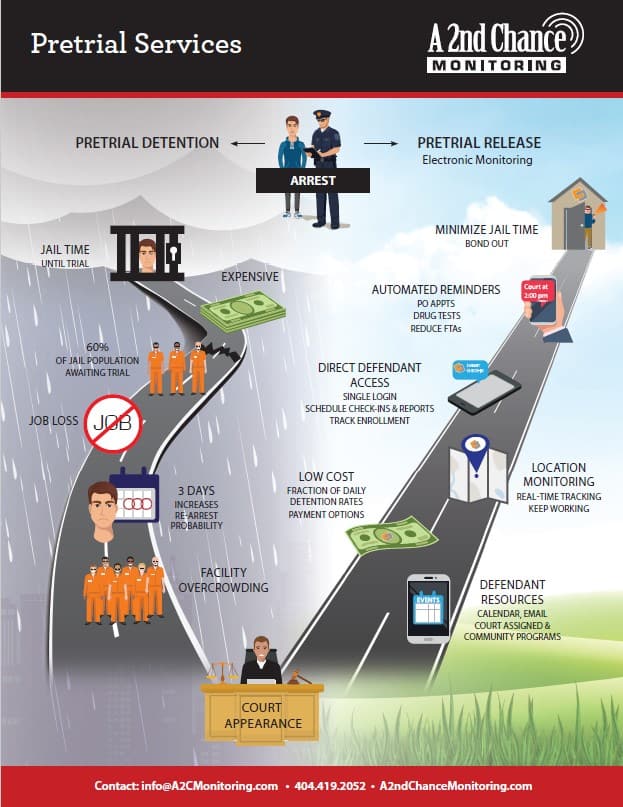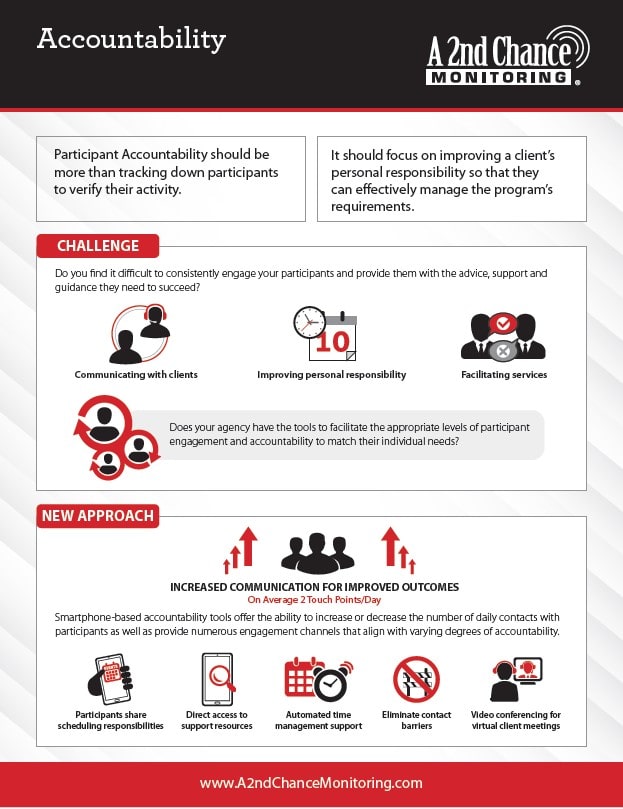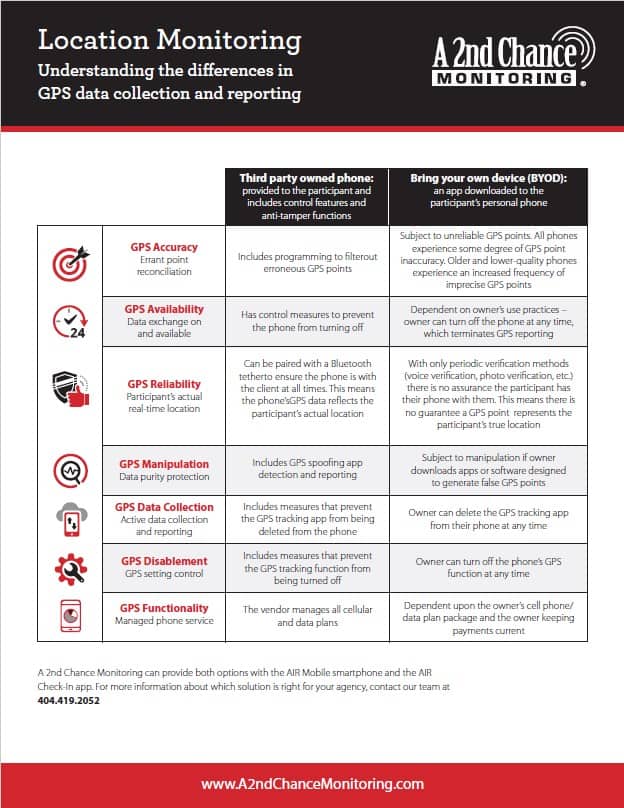Finding out that you have to wear a GPS monitor can be a frustrating and confusing experience. You may have concerns about what others think, how often you’ll have to charge the device and how hard it will be to take care of the equipment.
Not helping matters is that there are a ton of misconceptions floating around, which can make it tough to uncover the truth. With that in mind, A 2nd Chance Monitoring has created the following list of common myths to clear up some of the confusion:
Myth 1: Ankle Monitors Are Only for Criminals
Some people believe that ankle monitoring devices label the person wearing them as a criminal. And though probation ankle monitors are some of the most common types of court-ordered GPS monitors, they aren’t the only kind out there. People may have to wear monitoring devices as a form of pre-trial supervision, as well as in things like immigration cases, diversion programs and certain substance-abuse intervention programs.
But even if someone is wearing an ankle monitor while on probation or parole, it’s important to realize that they are working on their second chance. Wearing a monitor gives them an opportunity to get back in the community and move on from past mistakes, all while meeting their legal obligations.
If you are ordered to wear an ankle monitor, you can also conceal it with jeans or other clothing to protect your privacy. Remember, you are making the most of your second chance, and you don’t have to (nor should you) let the opinions of others discourage you.
Myth 2: Ankle Monitors Are Easy to Remove
The whole idea of monitoring devices being easy to remove stems from Hollywood portrayals and pop culture. But in reality, ankle monitors don’t come off easily. They can withstand substantial wear and are equipped with tamper-resistant technology; any attempt to remove or meddle with the device will alert the monitoring service.
Myth 3: GPS Ankle Monitors Must Be Charged Constantly
GPS monitors have rechargeable batteries, and they do need to be plugged in, but modern devices will last for 24 hours or more on a single charge.
We still recommend you plug in each night when you go to sleep so you can start the next day with a full battery. This way you won’t have to worry about the device dying if anything unexpected happens.
Myth 4: GPS Monitors Are Uncomfortable and Obtrusive
Lastly, today’s monitoring devices have improved designs, helping them be more discreet. People who are under court-ordered monitoring don’t have to wear big, bulky devices on their ankles. In turn, they’re far more comfortable than widespread belief would have you think.
Learn the Truth with A 2nd Chance
If you have questions about ankle monitors, A 2nd Chance Monitoring is here to help. Our team provides monitoring solutions and practical guidance so you can make the most of your opportunity to move on from your legal challenges. You can visit the FAQ section on our website to learn the right information from the very beginning!




